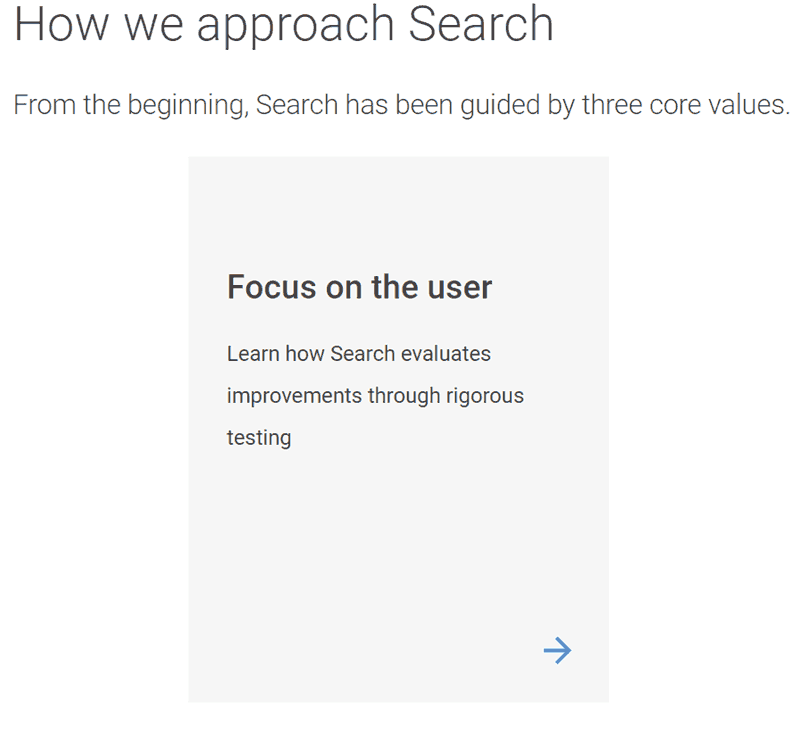There are a number of competing theories about what the March 2019 Update was about. This article evaluates each theory and proposes an idea of how to diagnose a ranking drop and how to fix it.
Need background on the update? Check out these articles stories first:
- Google Update Florida 2: March 2019 Core Update Is a Big One
- March 2019 Core Update: What’s Changed? Early Insights & Reaction
- Data Confirms Why Google March 2019 Update Feels Like a Rollback
Is the March Core Update About Trust?
There is no such thing at use at Google called trust. There’s a thing called the link graph, it’s a map of the Internet. And in this map, there are normal sites that link to normal sites and spam sites that link to spam sites.
One site does not have more “trust” than another site because there is no such metric or quality as trust.
Google Confirms There Is No Trust Factor
In a Google webmaster hangout, Google’s John Mueller said that a reason why a site might be ranking is because Google trusts it. The person asking the question picked up on the word “trust” then remarked that confirmed that the site ranked well because it had acquired trust.
John Mueller corrected him:
“I don’t know that we’d call it trust or anything crazy like that.”
The quality of trustworthiness is a matter of whether it is spam or not spam. It’s possible that sites that are closer to the seed set in a link distance ranking algorithm could be construed as more trustworthy- and this is already the case.
The idea that the March 2019 Core Update was about tweaking ranking factors to favor sites with more “trust” is giving in to the myth of Trust as a ranking factor.
Did Google Introduce a Bias for Sites with “Better” Links?
There is another theory that Google adjusted the algorithm to introduce a bias toward more “authoritative” brands and websites. Google does not trust brands and so-called authority sites because they are brands and authoritative.
Everything that Google ranks is ranked because users expect to see those pages ranked. They are not necessarily the best answers. Google ranks the pages that users expect to see because most users are satisfied by an answer from a particular site or because the page answers the question in a way that produces satisfaction for the most amount of users.
Here’s an example. For the query, “how to make a paella” Google ranks AllRecipes.com as the number one result. The recipe advises using two pounds of chicken and one pound of shrimp. Traditionally, paella is made with an abundance of seafood, not chicken. It is also made with ingredients like mussels and calamari in addition to shrimp.
Google ranked AllRecipes number one not because it’s the best paella recipe but because users are satisfied with an easy recipe that has common ingredients.
Is Google’s March 2019 Update About Links?
This is interesting. Links are more than a ranking factor. Links are a relevance factor. I suspect that Google’s algorithm has moved away from links as a ranking factor and more toward links as a relevance factor. Two different things.
A recent update to a Google patent that covers anchor text added the use of text around the anchor text to indicate what the site being linked to is relevant for. The patent did not refer to it as a ranking factor as in if you get enough of these the site should rank better.
It was limited to saying that if a link is surrounded by certain keywords, then those keywords may be what the linked page is about and to use that as a way to understand what the page is about (read Google Patent Update Focuses on Anchor Text)
To say that Google is adjusting the link ranking algorithm to favor brands and so-called authority sites betrays a lack of understanding of the basics of how links are used by Google. The idea that any search engine would introduce a brand bias is preposterous.
The general guiding principle is whether or not users expect to see a particular page in the SERPs. If users are happier with AllRecipes, then that’s what Google will show. If people are satisfied with sites similar to Epicurious or ChowHound, then that’s what Google will show. It’s all about what satisfies users.
Links are a way to gauge relevance for things like one web page to another web page. Links are a gate keeper, to lock out spam sites from the SERPs. It’s a gate keeper to welcome normal sites.
Is the Algorithm About Click Metrics?
User satisfaction is a big deal. But actual click rates are not a metric for promoting or demoting a site.
The click rate data that measures if users bounce back from a site is only for measuring how well the algorithm is working. The data is not for measuring how well people like a site.
If the algorithm notices that users are bouncing back to Google to pick another search result, that’s a sign that the algorithm is failing, not that the websites are failing.
User satisfaction is what Google’s algorithm is tuned to. Click through rate is used for measuring how well the algorithm satisfies users. Click through rate is not a Google ranking factor. Learn more about click through rate here.
Understanding & Diagnosing the March 2019 Ranking Drop
The ultimate decider of what goes to the top of the SERPs is the user. Google always shows sites that users want to see, that is what their algorithms strive for.
Knowing that, it follows that if you are going to diagnose what went wrong with your rankings, this is where to start.
- How well does your site answer the search query?
- How directly does your content answer the query?
- Does your content meander and deviate from the topic?
- What do users mean when they type your search query and does your site adequately answer that question?
Google’s web page about how search works (How Search Works) lists three core values:
- Focus on the user
- Empower website owners
- Maximize access to information (free & open web)
 If you want to know the secret of how Google Search works, the most fundamental value is stated right there on Google’s How Search Works page. It clearly states that Google focuses on the user.
If you want to know the secret of how Google Search works, the most fundamental value is stated right there on Google’s How Search Works page. It clearly states that Google focuses on the user.Google’s core value is not to show the most “trustworthy” sites or sites with the most or “best” links. Because some times the best answer is one with less links.
Google’s algorithm is focused on the user and what they want to see. So it follows that diagnosing why a site dropped rankings in the March 2019 update begins with figuring out where the disconnect is between your content and the user.
Note: These are theories I’ve seen across the web in forums, articles and social media. I seek to avoid creating hard feelings so I do not link to sources of the theories.
More Resources
- History of Google Algorithm Updates
- The Complete List of Google Penalties & How to Recover
- Google Offers Advice on Recovering From a Penalty
Images by Shutterstock, Modified by Author





